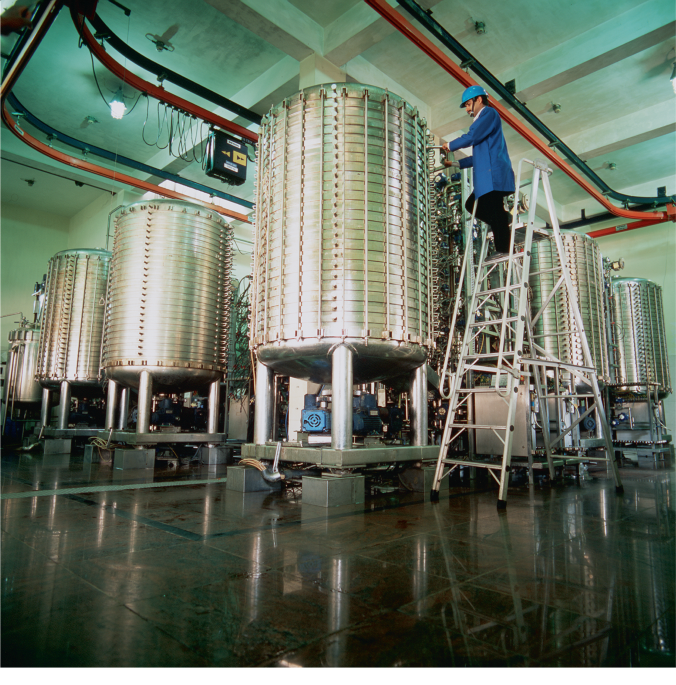Published October 2, 2023
12 min read
As a kid, I dreamed of becoming a marine biologist and living my life by the sea. Since I grew up in a landlocked suburb of Atlanta, I lived out this fantasy by setting up aquariums at home. At 14, I started working at my neighborhood aquarium shop. By 16, I had seven fish tanks at home. Then, at 20, I was introduced to photographer David Liittschwager, who hired me to help him with a National Geographic magazine assignment on marine life.
We spent 10 days aboard the Oscar Elton Sette, a 224-foot NOAA research vessel sailing off the Kona coast of Hawaii. David’s assignment was to document the astounding biodiversity found at the surface of the ocean. My role was to collect specimens for him to photograph.
(See the microscopic universe that lives in a single drop of water.)
Every night after the Sette had completed its scientific mission, I would cast a floating lamp off the port side of the ship. Like moths drawn to a flame, mysterious creatures would emerge from the depths in search of this light. Shimmering baby eels, tiny transparent crabs, sparkling squid. I’d carefully select an ambassador for each species and set up aquariums to house them as they waited for David to take their glamour shot.
Those evenings aboard the Sette made me feel as if I were on another planet. At the end of each night, I’d sit and marvel at my dazzling collection. I had never imagined such bizarre life-forms could exist in our oceans. My eyes were glued to the tanks, my attention absorbed by these alien beings. But I didn’t grasp the true magic of what was in front of me until I saw the photographs David took of these creatures I’d been gathering.
The biggest surprise was his image of a baby flounder, seen above. I caught this fish by accident, scooping it up as I was chasing some more obvious target. Only later, when I inspected the contents of my collecting jar, did I notice its two tiny eyeballs staring back at me. The only other feature I could discern was the faintly wriggling outline of its transparent body.
But David’s photograph of this flounder revealed a universe of detail that even my eager eyes had missed. His macro lens magnified its finely articulated ribs. The lightning-fast exposure froze its motion, providing a crisply defined view. A precisely aimed light released the rainbow hidden in the flounder’s skin. And the black background eliminated all distractions to focus our attention on the quiet beauty at hand.
Years after that project in Hawaii, I was snorkeling at night on a shallow reef in French Polynesia. Out of the darkness, another baby flounder emerged and settled on my mask. This time I knew what to look for. I angled my flashlight toward the little fish and saw the shimmering colors and delicate bones that David’s image had first revealed to me.
Before working for David, I had assumed the goal of photography was simply to reproduce an observation so that others could share the same experience. It had never occurred to me that photography could expand our visual perception and thereby teach us to see the world anew.
Size. Time. Light. Focus. These are the features of David’s photograph that expanded my understanding of that small flounder. And these are the tools that photography gives us to witness and reveal the world’s invisible wonders.
For example, size. When editors at National Geographic asked me to photograph a story on honeybees, I was not excited to take on the assignment. The tiny pollinators had already garnered so much media attention that I couldn’t imagine how I could contribute anything new. But as an insecure young photographer, how could I say no? So I faked some enthusiasm and landed a job I had no idea how to accomplish.
I started by learning how to keep bees in my Berkeley, California, backyard, hoping that with enough time and study, I’d discover some new way of portraying their lives. One day I noticed something out of place: A young bee had become trapped as it was emerging from the hive. Using a trick I’d learned from an entomologist, I plucked one of my eyelashes and used its thin, flexible tip to brush a bit of debris away from the bee’s face. Then I placed a light behind the hive to make the surrounding wax glow.
The bee’s position allowed me to bring my camera close and capture features on its head I hadn’t noticed before, like its jointed antennae and furry face. I’d spent a year tending to my hive—but until that moment I’d never experienced a bee this way. Once we were brought eye to eye, the intimacy inspired new questions. How does this creature perceive its environment? What do I look like to it? Why all the hair?
We tend to relate best to beings our own size, or at least creatures we can see with an unaided eye. When photography magnifies a subject, it can break that barrier. That opens us to entirely new perspectives.
There’s similar potential in time. In 2015 I met bat expert Rodrigo Medellín in Mexico’s Yucatán Peninsula, where his team had located a family of woolly false vampire bats, one of the largest species in the Americas. National Geographic wanted me to photograph the bats, and Medellín asked me to bring an enclosure so we could work with them in captivity. I brought a collapsible batting cage used for baseball practice and set it up at the foot of my hotel room bed. We then released a captured bat inside.
(Discover the secrets of Mexico’s meat-eating bats.)
Bats’ speed and stealth make them nearly impossible to track with a camera. But Medellín used a clever technique of enticing the carnivore to fly across the cage on command, using bits of raw chicken as a reward, and that allowed me to predict where it would be and when. I set the camera to take an image over a third of a second, knowing this would record only a blurry trace of the bat’s swift movement. But before the camera completed its exposure, I triggered a brief flash of light, creating a crisply defined image of the bat superimposed onto its impressionistic form.
We often assume a photograph can capture only a single moment, yet that image simultaneously illustrates two different time intervals—in a sense, one too fast for us to see and the other too slow. Our natural perception lies somewhere in between, as a series of moments strung together into a movie whose pace we cannot change. Photography gives us unique and flexible means to explore and portray time’s passage.
As for light, see how fog transforms traffic signal beams in Lucas Zimmermann’s long exposure. Every photograph is a collaboration with light. Photographers position light in clever ways or manipulate it to reveal hidden patterns. Using cameras’ capacities to detect colors invisible to the human eye, they broaden our sensory experience.
And focus? Broadly defined, focus is how photographers direct our attention, with technical skill and thoughtful composition that compel us to slow down and consider the layers of complexity and detail in a scene that we might miss at first glance.
When I first decided to pursue photography, I thought I’d have to abandon my childhood dream of being a scientist. But the longer I work in both realms, the better I understand how each reinforces the other. That’s the principle behind WonderLab, a research center I recently established.
I believe a compelling photograph can change us. It shapes what we notice, challenges our assumptions, and expands our curiosity. It motivates us to make room for new ideas and enlarges our circle of compassion. A beautiful, bewildering photograph is a wonderful place to start making sense of the staggering complexity around us.
Based in Berkeley, California, Anand Varma has spent years developing innovative photography techniques to reveal aspects of science and nature, such as the rapid motions of hummingbirds, that normally go unseen. A National Geographic Explorer since 2010, he’s also a TED speaker and a World Press Photo award winner.
This story appears in the December 2023 issue of National Geographic magazine.
Note: This article have been indexed to our site. We do not claim legitimacy, ownership or copyright of any of the content above. To see the article at original source Click Here













